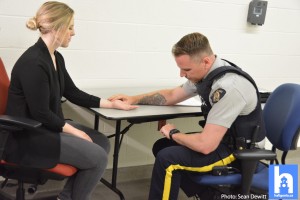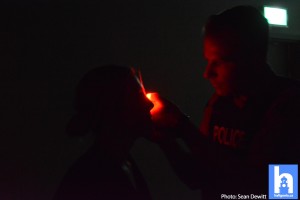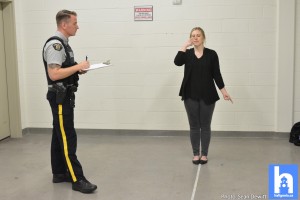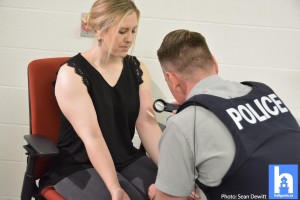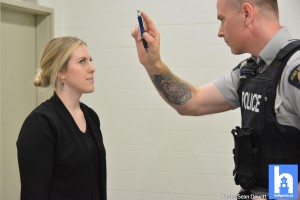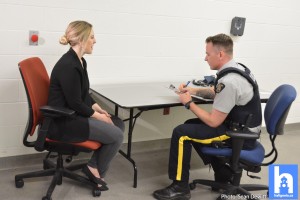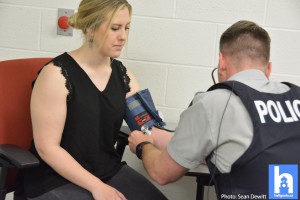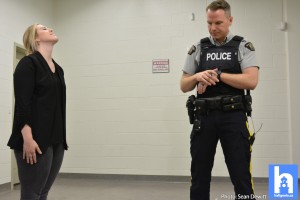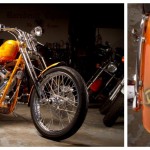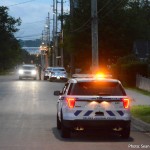When RCMP members come into contact with a driver that they suspect have consumed drugs or alcohol, they can have that person complete Standardized Field Sobriety Tests.
These tests include:
- Horizontal Gaze Nystagmus
- Walk and Turn
- One Leg Stand
Following these tests, the officer will decide whether or not to arrest the driver. If they do, they will contact a Drug Recognition Expert (DRE), who will perform further testing.
A DRE is a police officer with specialized training to detect drug impairment in drivers.
The DRE will conduct a 12-step procedure to determine if the driver is impaired by drugs and determine what types of drugs are causing their impairment. Categories of drugs include:
- Central Nervous System Depressants
- Inhalants
- Dissociative Anesthetics
- Cannabis
- Central Nervous System Stimulants
- Hallucinogens
- Narcotic Analgesic
The twelve steps of a DRE evaluation are:
- Breath Alcohol Test: The DRE conducts this test if they believe alcohol is involved. The results allow the DRE to determine to what extent, if any, alcohol is contributing to the driver’s level of impairment
- Interview of Arresting Officer: When the DRE did not arrest the driver, they will speak with the member who made the arrest to determine what led to the driver being arrested (for example, erratic driving, drug paraphernalia in the vehicle, behaviour etc)
- Preliminary Examinaation: The DRE will measure the driver’s pulse rate, check their eyes, and question them to determine if there are any injuries, illnesses or medical conditions that could cause or contribute to their impairment.
- Eye Exams: The DRE will examine the driver for horizontal gaze nystagmus, vertical gaze nystagmus, and will test the eyes’ ability to converge, or basically, to cross. (More on this below)
- Divided Attention Tests: These tests include a physical and a mental component, and require the driver to divide their attention between two to complete a task. This is meant to simulate the physical / mental multi-task that is required to drive a vehicle.
- Modified Romberg Balance: The driver is instructed to tilt their head back, close their eyes, and estimate the passage of a pre-determined amount of time. In addition to testing physical coordination and divided attention, this test is used to assess the driver’s internal clock.
- Walk and Turn: The driver is instructed to walk nine steps down a line in a heel-to-toe manner, turn around as instructed, and walk nine steps back.
- One Leg Stand: the driver is instructed to raise one leg, while balancing on the other, and count aloud.
- Finger to Nose: The driver is instructed to tilt their head back, close their eyes, and respond to instruction to touch the tip of their nose with their left or right index finger.
6. Clinical Indicators: This includes measurements of pulse rate, blood pressure, and body temperature.
7. Dark Room Checks of Pupil Size: The evaluator will measure the drivers’ pupil size in various lighting conditions to determine if they are normal, dilated, or constricted, and will also measure the pupils’ reaction to direct light.
8. Muscle Tone Examination: The evaluator will assess the subject’s muscle tone.
9. Injection Site Examination: The DRE will examine the driver for any evidence of intravenous drug use (needle marks, scabs, bruising, etc)
10. Interview, Statements, and other Observations: This includes an interview of the driver regarding their drug use, as well as any other relevant statements made by the driver.
11. Opinion of Evaluator: Based on everything that has happened up to this point, the DRE forms an opinion as to whether or not the driver is impaired, as well as what category or categories of drugs may be causing the impairment.
12. Toxicological Sample: After the end of the evaluation, a sample of blood or urine is taken from the driver, and is analyzed in a laboratory. These results are used to corroborate the opinion of the DRE.
Horizontal Gaze Nystagmus: Central nervous system depressants, inhalants, dissociative anesthetics, and alcohol will all cause a physiological response. This is an involuntary jerking of the eyes as they track an object moving from side to side.
The dosage of a drug, or the amount that the drug is influencing a driver, will result in varying degrees of HGN. If will present itself in stages:
- Lack of Smooth Pursuit: The eyes will track in a jerky manner.HGNjdkdkdkdkdkdkd
- Distinct and Substained Nystagmus at Maximum Deviation: While focused on a stationary object in the drivers’ periphery, the eyes will continue to jerk noticeably.
- Angle of Onset: HGN will be present earlier (at a smaller angle from central) as drug influence increases.
- Vertical Gaze Nystagmus: At high doses, some drugs will also cause VGN, which is similar to HGN, but involves having the eyes track up and down rather than side to side.
- Lack of Convergence: Central nervous system depressants, inhalants, dissociative anesthetics, cannibis, and alcohol will cause an inability for the driver to focus on an object as it approaches the bridge of their nose.
(SOURE: RCMP) (Demonstration only)
A few other notes:
- As the upcoming legalization of marijuana draws near, a bill will also allow police to obtain roadside saliva tests. These tests can detect a range of consumed drugs.
- Most of the testing can take, on average, 50 minutes to complete. Blood is drawn at a hospital if it is requested to be drawn.
- Police throughout the country are working to ensure that they have ample amounts of trained DRE officers who can respond at any time of day.
- As technology and training advances, police will look to remain up to date in relevant skills and tools used to determine impairment in drivers.

